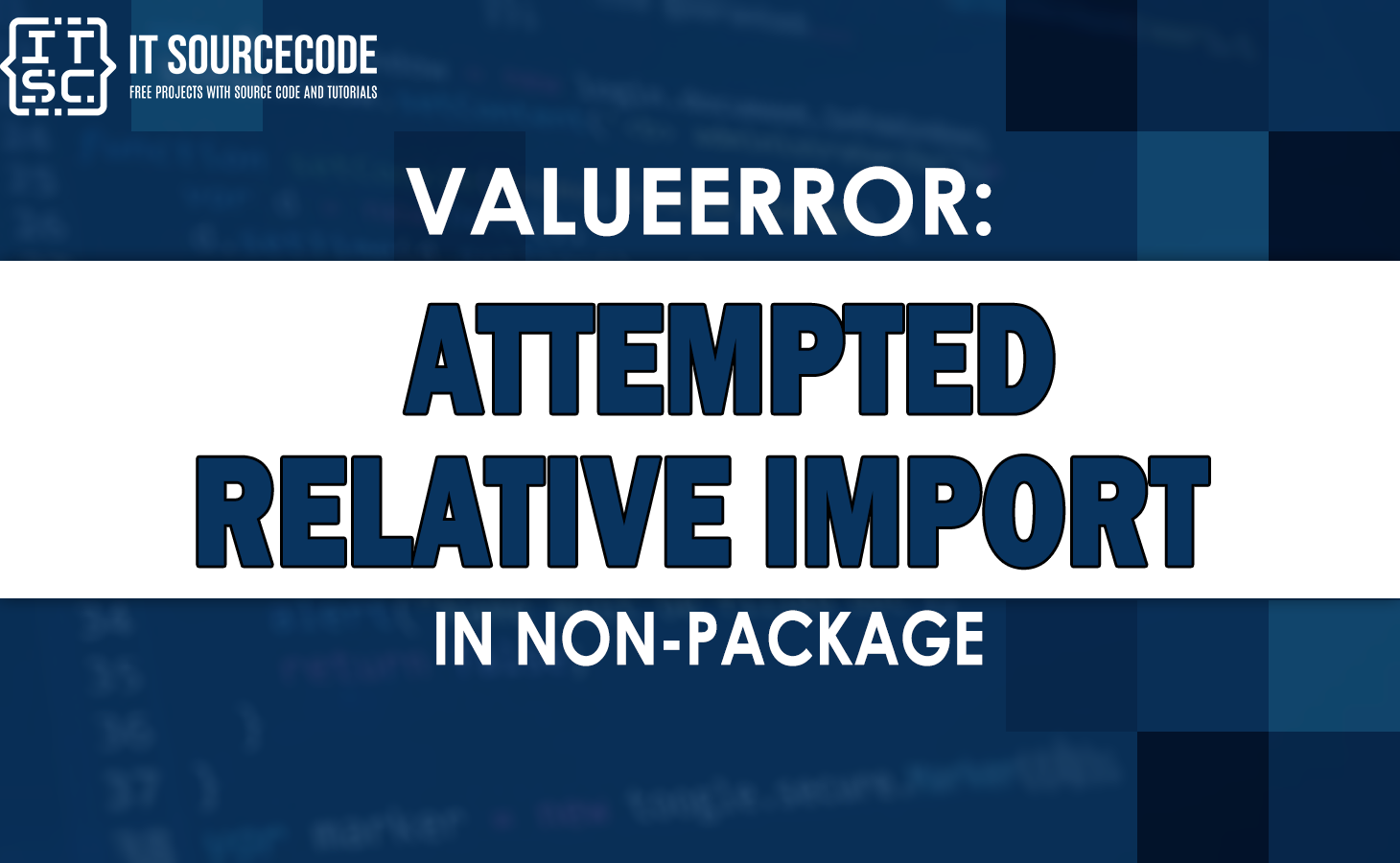In Python programming, relative imports are a proper way to import modules or packages within the same project directory.
However, sometimes you may encounter a ValueError: Attempted relative import in non-package error.
This error typically occurs when we attempt to perform a relative import from a script that is not recognized as a package by Python.
In this article, we will explain the reasons behind this error and provide examples and solutions to fix it.
Why the Valueerror attempted relative import in non-package error occur?
The “ValueError attempted relative import in non-package” error typically occurs when we attempt to use a relative import statement in a Python file that is not part of a package.
In Python, a package is a directory that contains an init.py file. This error occurs when we are trying to import a module or package from a non-package file.
How to Reproduce the Error?
This is an example of how to reproduce the error:
Example 1: File Structure
Look at the following file structure:
project/
main.py
utils/
helper.py
In helper.py, we have the following import statement:
from .other_module import some_functionTrying to execute helper.py directly will result in the ValueError Attempted Relative Import in Non-Package error since helper.py is not recognized as part of a package.
Example 2: Executing Script
Assume that we have a script named script.py that resides outside any package.
Within script.py, you have an import statement like this:
from .package.module import some_functionExecuting script.py directly will raise the ValueError because it’s not located within a package.
Solutions to Fix the Error
To fix the attempted relative import in non-package, you can apply the following solutions:
Solution 1: Run the Script as a Module
If you encounter the error while running a script directly, you can run it as a module instead.
Instead of running the script with python script.py, use the -m flag to run it as a module:
python -m my_project.module1Through running the script as a module, Python recognizes it as part of a package and resolves the relative imports correctly.
Solution 2: Modifying sys.path
Add the directory consisting of the package to the sys.path list using sys.path.append() before performing the relative import.
Solution 3: Using Absolute Imports
Instead of using relative imports, you can switch to absolute imports. Absolute imports are specified using the full path from the project’s root directory.
For example:
from my_project.utils.helper import some_functionThrough using absolute imports, you can prevent the ValueError.
Solution 4: Restructuring the Project
If the package structure is not suitable for relative imports, consider restructuring the project to ensure the files are organized within correct packages.
Solution 5: Using the -m Option
Execute the module using the -m option with the Python interpreter, which enables the module to be recognized as part of a package.
Solution 6: Solution 3: Add an Empty init.py File
Make sure that all directories intended to be packages have an empty init.py file.
This file serves as an indicator to Python that the directory is a package.
If the directory doesn’t consist of an init.py file, Python treats it as a regular directory and does not allow relative imports.
Solution 7: Use an IDE or Text Editor with Proper Project Configuration
Some integrated development environments (IDEs) and text editors have project configuration options that help manage packages and modules effectively.
Using such tools can alleviate the ValueError by providing proper project context to Python.
Best Practices to Avoid the ValueError
To avoid encountering the Attempted Relative Import in Non-Package error in the future, follow the following best practices:
- Setup your project structure properly, using packages to group related modules together.
- Prefer using absolute imports instead of relative imports, as they provide clearer and more reliable import paths.
- Follow the recommended Python package structure guidelines to ensure a well-structured project.
- Regularly check your codebase and check that all import statements are correct and aligned with your project structure.
Additional Resources
- How to Solve the Python ValueError
- Valueerror too many values to unpack expected 3
- Valueerror embedded null byte
- Valueerror: unknown label type: ‘continuous’
Conclusion
In this article, we discuss the ValueError: Attempted Relative Import in Non-Package error that can occur when working with Python code.
Also, we’ve discussed the cause of the error, provide examples to illustrate its occurrence, and offer solutions to fix it.
By understanding the causes and applying the suggested solutions, you can resolve this error and ensure smooth Python development.
FAQs
This error occurs when you attempt to perform a relative import from a script that is not recognized as a package by Python.
You can fix this error by using absolute imports, running the script as a module, adding an empty init.py file, executing from the correct directory, restructuring your package, or using an IDE or text editor with proper project configuration.
The init.py file serves as an indicator to Python that a directory is a package. Without this file, Python treats the directory as a regular directory and does not allow relative imports.
Absolute imports provide a clear and unambiguous way to define the location of the imported module or package. They make the code more readable, reduce possible conflicts, and ensure consistent behavior.

